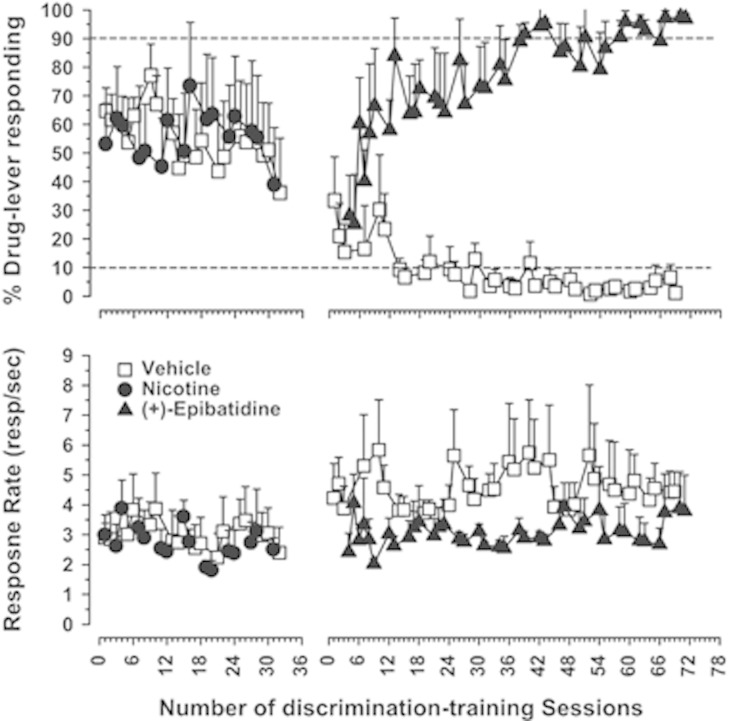Figure 3.
Acquisition of discriminative-stimulus control by 0.001 mg/kg (+)-epibatidine in four immunized squirrel monkeys that failed to learn 0.1 mg/kg nicotine discrimination (Group B). Data from nicotine discrimination training sessions from Figure 2 (right top and bottom panels) are also included for comparison with (+)-epibatidine discrimination training. Abscissae (top and bottom panels): number of training session once single lever training was completed (1–24) and both levers were available (25 sessions onwards). Ordinates: effect shown as the percentage of lever-press responses occurring on the nicotine- or (+)-epibatidine-lever (top panel) and response rates (bottom panel) following injections of nicotine, (+)-epibatidine or vehicle (saline). See Figure 2 for all other details. ANOVA confirmed a significant effect of drug treatment (F1,222=57.56; P<0.05), a near significant effect of time (F37,192=1.42; P<0.05), and a significant interaction between drug and time (F37,222=5.13; P<0.05) on the percentage of (+)-epibatidine-appropriate responding during phase 2 training. Differences in the magnitude of effects among individual subjects precluded statistical significance for the averaged response rate data (drug treatment: F1,222=3.15; P>0.05; time: F37,222=0.45; P>0.05; treatment-by-time interaction: F37,222=0.46; P>0.05).

